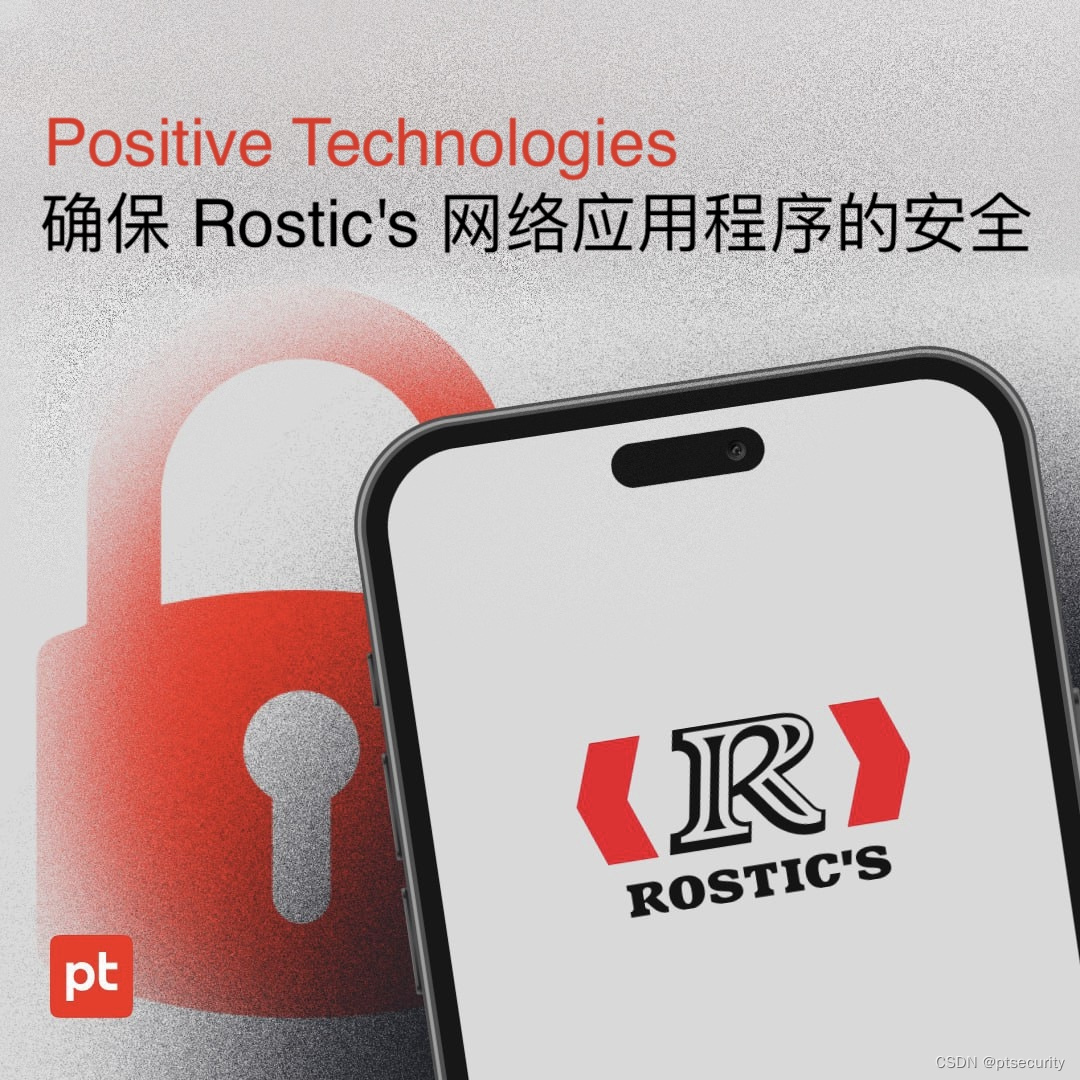首先将文件夹~/rknpu2/runtime/RK3588/Linux/librknn_api/aarch64/下的文件librknnrt.so复制到文件夹/usr/lib/下(该文件夹下原有的文件librknnrt.so是用来测试resnet50模型的,所以要替换成yolo模型的librknnrt.so),如下图所示:
![]()
然后在文件夹/home/rpdzkj/rknn-toolkit-lit2-examples/inference_with_lite/下放入以下3个文件:
bus.jpg best.rknn des.py
其中bus.jpg是要检测的图片,best.rknn是我们转换的yolov5的rknn模型,des.py是要运行的py代码,其代码如下:
# -*- coding: utf-8 -*-
# coding:utf-8
import os
import urllib
import traceback
import time
import sys
import numpy as np
import cv2
import platform
from rknnlite.api import RKNNLite
from PIL import Image
# Model from https://github.com/airockchip/rknn_model_zoo
RKNN_MODEL = 'best.rknn'
IMG_PATH = './bus.jpg'
DATASET = './dataset.txt'
QUANTIZE_ON = True
BOX_THRESH = 0.5
OBJ_THRESH = 0.45
NMS_THRESH = 0.65
IMG_SIZE = 640
CLASSES = ("car", "moto", "persons")
# decice tree for rk356x/rk3588
DEVICE_COMPATIBLE_NODE = '/proc/device-tree/compatible'
def get_host():
# get platform and device type
system = platform.system()
machine = platform.machine()
os_machine = system + '-' + machine
if os_machine == 'Linux-aarch64':
try:
with open(DEVICE_COMPATIBLE_NODE) as f:
device_compatible_str = f.read()
host = 'RK3588'
except IOError:
print('Read device node {} failed.'.format(DEVICE_COMPATIBLE_NODE))
exit(-1)
else:
host = os_machine
return host
INPUT_SIZE = 640
RK3588_RKNN_MODEL = 'best.rknn'
def sigmoid(x):
return 1 / (1 + np.exp(-x))
def xywh2xyxy(x):
# Convert [x, y, w, h] to [x1, y1, x2, y2]
y = np.copy(x)
y[:, 0] = x[:, 0] - x[:, 2] / 2 # top left x
y[:, 1] = x[:, 1] - x[:, 3] / 2 # top left y
y[:, 2] = x[:, 0] + x[:, 2] / 2 # bottom right x
y[:, 3] = x[:, 1] + x[:, 3] / 2 # bottom right y
return y
def process(input, mask, anchors):
anchors = [anchors[i] for i in mask]
grid_h, grid_w = map(int, input.shape[0:2])
box_confidence = sigmoid(input[..., 4])
box_confidence = np.expand_dims(box_confidence, axis=-1)
box_class_probs = sigmoid(input[..., 5:])
box_xy = sigmoid(input[..., :2]) * 2 - 0.5
col = np.tile(np.arange(0, grid_w), grid_w).reshape(-1, grid_w)
row = np.tile(np.arange(0, grid_h).reshape(-1, 1), grid_h)
col = col.reshape(grid_h, grid_w, 1, 1).repeat(3, axis=-2)
row = row.reshape(grid_h, grid_w, 1, 1).repeat(3, axis=-2)
grid = np.concatenate((col, row), axis=-1)
box_xy += grid
box_xy *= int(IMG_SIZE/grid_h)
box_wh = pow(sigmoid(input[..., 2:4]) * 2, 2)
box_wh = box_wh * anchors
box = np.concatenate((box_xy, box_wh), axis=-1)
return box, box_confidence, box_class_probs
def filter_boxes(boxes, box_confidences, box_class_probs):
"""Filter boxes with box threshold. It's a bit different with origin yolov5 post process!
# Arguments
boxes: ndarray, boxes of objects.
box_confidences: ndarray, confidences of objects.
box_class_probs: ndarray, class_probs of objects.
# Returns
boxes: ndarray, filtered boxes.
classes: ndarray, classes for boxes.
scores: ndarray, scores for boxes.
"""
boxes = boxes.reshape(-1, 4)
box_confidences = box_confidences.reshape(-1)
box_class_probs = box_class_probs.reshape(-1, box_class_probs.shape[-1])
_box_pos = np.where(box_confidences >= OBJ_THRESH)
boxes = boxes[_box_pos]
box_confidences = box_confidences[_box_pos]
box_class_probs = box_class_probs[_box_pos]
class_max_score = np.max(box_class_probs, axis=-1)
classes = np.argmax(box_class_probs, axis=-1)
_class_pos = np.where(class_max_score >= OBJ_THRESH)
boxes = boxes[_class_pos]
classes = classes[_class_pos]
scores = (class_max_score* box_confidences)[_class_pos]
return boxes, classes, scores
def nms_boxes(boxes, scores):
"""Suppress non-maximal boxes.
# Arguments
boxes: ndarray, boxes of objects.
scores: ndarray, scores of objects.
# Returns
keep: ndarray, index of effective boxes.
"""
x = boxes[:, 0]
y = boxes[:, 1]
w = boxes[:, 2] - boxes[:, 0]
h = boxes[:, 3] - boxes[:, 1]
areas = w * h
order = scores.argsort()[::-1]
keep = []
while order.size > 0:
i = order[0]
keep.append(i)
xx1 = np.maximum(x[i], x[order[1:]])
yy1 = np.maximum(y[i], y[order[1:]])
xx2 = np.minimum(x[i] + w[i], x[order[1:]] + w[order[1:]])
yy2 = np.minimum(y[i] + h[i], y[order[1:]] + h[order[1:]])
w1 = np.maximum(0.0, xx2 - xx1 + 0.00001)
h1 = np.maximum(0.0, yy2 - yy1 + 0.00001)
inter = w1 * h1
ovr = inter / (areas[i] + areas[order[1:]] - inter)
inds = np.where(ovr <= NMS_THRESH)[0]
order = order[inds + 1]
keep = np.array(keep)
return keep
def yolov5_post_process(input_data):
masks = [[0, 1, 2], [3, 4, 5], [6, 7, 8]]
anchors = [[15,20], [20, 75], [28, 25], [31,136], [44,42],
[53,215], [75,76], [98,421], [148,226]]
#anchors = [[10, 13], [16, 30], [33, 23], [30, 61], [62, 45],
#[59, 119], [116, 90], [156, 198], [373, 326]]
boxes, classes, scores = [], [], []
for input, mask in zip(input_data, masks):
b, c, s = process(input, mask, anchors)
b, c, s = filter_boxes(b, c, s)
boxes.append(b)
classes.append(c)
scores.append(s)
boxes = np.concatenate(boxes)
boxes = xywh2xyxy(boxes)
classes = np.concatenate(classes)
scores = np.concatenate(scores)
nboxes, nclasses, nscores = [], [], []
for c in set(classes):
inds = np.where(classes == c)
b = boxes[inds]
c = classes[inds]
s = scores[inds]
keep = nms_boxes(b, s)
nboxes.append(b[keep])
nclasses.append(c[keep])
nscores.append(s[keep])
if not nclasses and not nscores:
return None, None, None
boxes = np.concatenate(nboxes)
classes = np.concatenate(nclasses)
scores = np.concatenate(nscores)
return boxes, classes, scores
def draw(image, boxes, scores, classes):
"""Draw the boxes on the image.
# Argument:
image: original image.
boxes: ndarray, boxes of objects.
classes: ndarray, classes of objects.
scores: ndarray, scores of objects.
all_classes: all classes name.
"""
for box, score, cl in zip(boxes, scores, classes):
top, left, right, bottom = box
print('class: {}, score: {}'.format(CLASSES[cl], score))
print('box coordinate left,top,right,down: [{}, {}, {}, {}]'.format(top, left, right, bottom))
top = int(top)
left = int(left)
right = int(right)
bottom = int(bottom)
cv2.rectangle(image, (top, left), (right, bottom), (255, 0, 0), 2)
cv2.putText(image, '{0} {1:.2f}'.format(CLASSES[cl], score),
(top, left - 6),
cv2.FONT_HERSHEY_SIMPLEX,
0.6, (0, 0, 255), 2)
def letterbox(im, new_shape=(640, 640), color=(0, 0, 0)):
# Resize and pad image while meeting stride-multiple constraints
shape = im.shape[:2] # current shape [height, width]
if isinstance(new_shape, int):
new_shape = (new_shape, new_shape)
# Scale ratio (new / old)
r = min(new_shape[0] / shape[0], new_shape[1] / shape[1])
# Compute padding
ratio = r, r # width, height ratios
new_unpad = int(round(shape[1] * r)), int(round(shape[0] * r))
dw, dh = new_shape[1] - new_unpad[0], new_shape[0] - new_unpad[1] # wh padding
dw /= 2 # divide padding into 2 sides
dh /= 2
if shape[::-1] != new_unpad: # resize
im = cv2.resize(im, new_unpad, interpolation=cv2.INTER_LINEAR)
top, bottom = int(round(dh - 0.1)), int(round(dh + 0.1))
left, right = int(round(dw - 0.1)), int(round(dw + 0.1))
im = cv2.copyMakeBorder(im, top, bottom, left, right, cv2.BORDER_CONSTANT, value=color) # add border
return im, ratio, (dw, dh)
if __name__ == '__main__':
host_name = get_host()
rknn_model = RK3588_RKNN_MODEL
rknn_lite = RKNNLite()
# load RKNN model
print('--> Load RKNN model')
ret = rknn_lite.load_rknn(rknn_model)
if ret != 0:
print('Load RKNN model failed')
exit(ret)
print('done')
#####ori_img = cv2.imread('./bus.jpg')
######img = cv2.cvtColor(ori_img, cv2.COLOR_BGR2RGB)
# init runtime environment
print('--> Init runtime environment')
# run on RK356x/RK3588 with Debian OS, do not need specify target.
ret = rknn_lite.init_runtime(core_mask=RKNNLite.NPU_CORE_0)
if ret != 0:
print('Init runtime environment failed')
exit(ret)
print('done')
# Set inputs
img = cv2.imread(IMG_PATH)
img, ratio, (dw, dh) = letterbox(img, new_shape=(IMG_SIZE, IMG_SIZE))
img = cv2.cvtColor(img, cv2.COLOR_BGR2RGB)
img = cv2.resize(img, (IMG_SIZE, IMG_SIZE))
# Inference
print('--> Running model')
outputs = rknn_lite.inference(inputs=[img])
#np.save('./onnx_yolov5_0.npy', outputs[0])
#np.save('./onnx_yolov5_1.npy', outputs[1])
#np.save('./onnx_yolov5_2.npy', outputs[2])
print('done')
# post process
input0_data = outputs[0]
input1_data = outputs[1]
input2_data = outputs[2]
input0_data = input0_data.reshape([3, -1]+list(input0_data.shape[-2:]))
input1_data = input1_data.reshape([3, -1]+list(input1_data.shape[-2:]))
input2_data = input2_data.reshape([3, -1]+list(input2_data.shape[-2:]))
input_data = list()
input_data.append(np.transpose(input0_data, (2, 3, 0, 1)))
input_data.append(np.transpose(input1_data, (2, 3, 0, 1)))
input_data.append(np.transpose(input2_data, (2, 3, 0, 1)))
boxes, classes, scores = yolov5_post_process(input_data)
img_1 = cv2.cvtColor(img, cv2.COLOR_RGB2BGR)
if boxes is not None:
draw(img_1, boxes, scores, classes)
cv2.imwrite('result.jpg', img_1)
rknn_lite.release()代码运行结果如下:

这里没有出车,是我训练的模型问题。
大家对以上代码是不是很熟悉,其实这部分代码的很多函数都是将onnx文件转换为rknn文件的代码,只是把它的from rknn.api import RKNN修改为from rknnlite.api import RKNNLite,并且将载入rknn模型的内容修改即可,数据的处理完全没变。
用这个代码的好处是,我们以后对相机进行检测目标时,只需要下载一次rknn模型,后续只需要处理图片即可。
二、下面再结合lidar数据的获取,我们可以同时获取雷达数据和检测rknn模型,代码如下:
#!/usr/bin/env python
# -*- coding: utf-8 -*-
# coding:utf-8
import cv2
import rospy
from sensor_msgs.msg import PointCloud2
import sensor_msgs.point_cloud2 as pc2
from std_msgs.msg import Header
from visualization_msgs.msg import Marker, MarkerArray
from geometry_msgs.msg import Point
#import torch
import numpy as np
import sys
import time,datetime
print(sys.version)
#from recon_barriers_model import recon_barriers
#from pclpy import pcl
from queue import Queue
import open3d as o3d
import matplotlib
import matplotlib.pyplot as plt
from mpl_toolkits.mplot3d import Axes3D
#%matplotlib
#from create_date_file import data_time
import threading
import time,datetime
import os
#先初始化ros,再from rknnlite.api import RKNNLite,否则会报错
rospy.init_node('lidar_node')
import os
import urllib
import traceback
import sys
import numpy as np
import platform
from rknnlite.api import RKNNLite
from PIL import Image
#######################################################################################################
#1.==================================rknn模型检测=====================================================#
#######################################################################################################
QUANTIZE_ON = True
BOX_THRESH = 0.5
OBJ_THRESH = 0.45
NMS_THRESH = 0.65
IMG_SIZE = 640
CLASSES = ("car", "moto", "persons")
# decice tree for rk356x/rk3588
DEVICE_COMPATIBLE_NODE = '/proc/device-tree/compatible'
def get_host():
# get platform and device type
system = platform.system()
machine = platform.machine()
os_machine = system + '-' + machine
if os_machine == 'Linux-aarch64':
try:
with open(DEVICE_COMPATIBLE_NODE) as f:
device_compatible_str = f.read()
host = 'RK3588'
except IOError:
print('Read device node {} failed.'.format(DEVICE_COMPATIBLE_NODE))
exit(-1)
else:
host = os_machine
return host
INPUT_SIZE = 640
RK3588_RKNN_MODEL = 'best.rknn'
def sigmoid(x):
return 1 / (1 + np.exp(-x))
def xywh2xyxy(x):
# Convert [x, y, w, h] to [x1, y1, x2, y2]
y = np.copy(x)
y[:, 0] = x[:, 0] - x[:, 2] / 2 # top left x
y[:, 1] = x[:, 1] - x[:, 3] / 2 # top left y
y[:, 2] = x[:, 0] + x[:, 2] / 2 # bottom right x
y[:, 3] = x[:, 1] + x[:, 3] / 2 # bottom right y
return y
def process(input, mask, anchors):
anchors = [anchors[i] for i in mask]
grid_h, grid_w = map(int, input.shape[0:2])
box_confidence = sigmoid(input[..., 4])
box_confidence = np.expand_dims(box_confidence, axis=-1)
box_class_probs = sigmoid(input[..., 5:])
box_xy = sigmoid(input[..., :2]) * 2 - 0.5
col = np.tile(np.arange(0, grid_w), grid_w).reshape(-1, grid_w)
row = np.tile(np.arange(0, grid_h).reshape(-1, 1), grid_h)
col = col.reshape(grid_h, grid_w, 1, 1).repeat(3, axis=-2)
row = row.reshape(grid_h, grid_w, 1, 1).repeat(3, axis=-2)
grid = np.concatenate((col, row), axis=-1)
box_xy += grid
box_xy *= int(IMG_SIZE/grid_h)
box_wh = pow(sigmoid(input[..., 2:4]) * 2, 2)
box_wh = box_wh * anchors
box = np.concatenate((box_xy, box_wh), axis=-1)
return box, box_confidence, box_class_probs
def filter_boxes(boxes, box_confidences, box_class_probs):
"""Filter boxes with box threshold. It's a bit different with origin yolov5 post process!
# Arguments
boxes: ndarray, boxes of objects.
box_confidences: ndarray, confidences of objects.
box_class_probs: ndarray, class_probs of objects.
# Returns
boxes: ndarray, filtered boxes.
classes: ndarray, classes for boxes.
scores: ndarray, scores for boxes.
"""
boxes = boxes.reshape(-1, 4)
box_confidences = box_confidences.reshape(-1)
box_class_probs = box_class_probs.reshape(-1, box_class_probs.shape[-1])
_box_pos = np.where(box_confidences >= OBJ_THRESH)
boxes = boxes[_box_pos]
box_confidences = box_confidences[_box_pos]
box_class_probs = box_class_probs[_box_pos]
class_max_score = np.max(box_class_probs, axis=-1)
classes = np.argmax(box_class_probs, axis=-1)
_class_pos = np.where(class_max_score >= OBJ_THRESH)
boxes = boxes[_class_pos]
classes = classes[_class_pos]
scores = (class_max_score* box_confidences)[_class_pos]
return boxes, classes, scores
def nms_boxes(boxes, scores):
"""Suppress non-maximal boxes.
# Arguments
boxes: ndarray, boxes of objects.
scores: ndarray, scores of objects.
# Returns
keep: ndarray, index of effective boxes.
"""
x = boxes[:, 0]
y = boxes[:, 1]
w = boxes[:, 2] - boxes[:, 0]
h = boxes[:, 3] - boxes[:, 1]
areas = w * h
order = scores.argsort()[::-1]
keep = []
while order.size > 0:
i = order[0]
keep.append(i)
xx1 = np.maximum(x[i], x[order[1:]])
yy1 = np.maximum(y[i], y[order[1:]])
xx2 = np.minimum(x[i] + w[i], x[order[1:]] + w[order[1:]])
yy2 = np.minimum(y[i] + h[i], y[order[1:]] + h[order[1:]])
w1 = np.maximum(0.0, xx2 - xx1 + 0.00001)
h1 = np.maximum(0.0, yy2 - yy1 + 0.00001)
inter = w1 * h1
ovr = inter / (areas[i] + areas[order[1:]] - inter)
inds = np.where(ovr <= NMS_THRESH)[0]
order = order[inds + 1]
keep = np.array(keep)
return keep
def yolov5_post_process(input_data):
masks = [[0, 1, 2], [3, 4, 5], [6, 7, 8]]
anchors = [[15,20], [20, 75], [28, 25], [31,136], [44,42],
[53,215], [75,76], [98,421], [148,226]]
#anchors = [[10, 13], [16, 30], [33, 23], [30, 61], [62, 45],
#[59, 119], [116, 90], [156, 198], [373, 326]]
boxes, classes, scores = [], [], []
for input, mask in zip(input_data, masks):
b, c, s = process(input, mask, anchors)
b, c, s = filter_boxes(b, c, s)
boxes.append(b)
classes.append(c)
scores.append(s)
boxes = np.concatenate(boxes)
boxes = xywh2xyxy(boxes)
classes = np.concatenate(classes)
scores = np.concatenate(scores)
nboxes, nclasses, nscores = [], [], []
for c in set(classes):
inds = np.where(classes == c)
b = boxes[inds]
c = classes[inds]
s = scores[inds]
keep = nms_boxes(b, s)
nboxes.append(b[keep])
nclasses.append(c[keep])
nscores.append(s[keep])
if not nclasses and not nscores:
return None, None, None
boxes = np.concatenate(nboxes)
classes = np.concatenate(nclasses)
scores = np.concatenate(nscores)
return boxes, classes, scores
def draw(image, boxes, scores, classes):
"""Draw the boxes on the image.
# Argument:
image: original image.
boxes: ndarray, boxes of objects.
classes: ndarray, classes of objects.
scores: ndarray, scores of objects.
all_classes: all classes name.
"""
for box, score, cl in zip(boxes, scores, classes):
top, left, right, bottom = box
print('class: {}, score: {}'.format(CLASSES[cl], score))
print('box coordinate left,top,right,down: [{}, {}, {}, {}]'.format(top, left, right, bottom))
top = int(top)
left = int(left)
right = int(right)
bottom = int(bottom)
cv2.rectangle(image, (top, left), (right, bottom), (255, 0, 0), 2)
cv2.putText(image, '{0} {1:.2f}'.format(CLASSES[cl], score),
(top, left - 6),
cv2.FONT_HERSHEY_SIMPLEX,
0.6, (0, 0, 255), 2)
def letterbox(im, new_shape=(640, 640), color=(0, 0, 0)):
# Resize and pad image while meeting stride-multiple constraints
shape = im.shape[:2] # current shape [height, width]
if isinstance(new_shape, int):
new_shape = (new_shape, new_shape)
# Scale ratio (new / old)
r = min(new_shape[0] / shape[0], new_shape[1] / shape[1])
# Compute padding
ratio = r, r # width, height ratios
new_unpad = int(round(shape[1] * r)), int(round(shape[0] * r))
dw, dh = new_shape[1] - new_unpad[0], new_shape[0] - new_unpad[1] # wh padding
dw /= 2 # divide padding into 2 sides
dh /= 2
if shape[::-1] != new_unpad: # resize
im = cv2.resize(im, new_unpad, interpolation=cv2.INTER_LINEAR)
top, bottom = int(round(dh - 0.1)), int(round(dh + 0.1))
left, right = int(round(dw - 0.1)), int(round(dw + 0.1))
im = cv2.copyMakeBorder(im, top, bottom, left, right, cv2.BORDER_CONSTANT, value=color) # add border
return im, ratio, (dw, dh)
host_name = get_host()
rknn_model = RK3588_RKNN_MODEL
rknn_lite = RKNNLite()
# load RKNN model
print('--> Load RKNN model')
ret = rknn_lite.load_rknn(rknn_model)
if ret != 0:
print('Load RKNN model failed')
exit(ret)
print('done')
# init runtime environment
print('--> Init runtime environment')
# run on RK356x/RK3588 with Debian OS, do not need specify target.
ret = rknn_lite.init_runtime(core_mask=RKNNLite.NPU_CORE_0)
if ret != 0:
print('Init runtime environment failed')
exit(ret)
print('done')
#######################################################################################################
#1.==================================rknn模型检测=====================================================#
#######################################################################################################
#######################################################################################################
#2.==================================雷达数据获取=====================================================#
#######################################################################################################
#2.打开相机
cap = cv2.VideoCapture("/dev/video61")
#1.根据时间自动创建文件夹
def data_time(root_path="img_lidar_save/"):
# 1.鑾峰彇褰撳墠鏃堕棿瀛楃涓叉垨鏃堕棿鎴筹紙閮藉彲绮剧‘鍒板井绉掞級
start_time=datetime.datetime.now().strftime(f'%Y-%m-%d %H:%M:%S{r".%f"}')
times=start_time.split(" ")
# 2.data_files锛氭牴鎹棩鏈熻幏鍙栬鍒涘缓鐨勬枃浠跺す鍚嶇О锛屾瘮濡備粖澶╂槸2023_12_07
data_files=times[0]
#3.鑾峰彇鏂囦欢澶硅矾寰勶細img_lidar_save/2023_12_07
file_path=root_path+data_files
camera_file = file_path + "/" + "camera_data"
lidar_file = file_path + "/" + "lidar_data"
#4.濡傛灉浠婂ぉ杩樻病鏈夋枃浠跺す锛屽垯鍒涘缓鏂囦欢澶?鏂囦欢澶瑰悕绉颁负 2023_12_07
if not os.path.exists(file_path):
os.makedirs(file_path)
#5.寤虹珛camera鍜宭idar鏂囦欢澶癸紝瀛樺彇鍚勮嚜鐨勬暟鎹?
if not os.path.exists(camera_file):
os.makedirs(camera_file)
if not os.path.exists(lidar_file):
os.makedirs(lidar_file)
#6.寤虹珛鍚勮嚜鐨勫瓨鍙栧浘鐗囧拰瑙嗛鐨勬枃浠跺す
img_file=camera_file+ "/" +"image"
vedios=camera_file+ "/" +"vedios"
lidar_videos=lidar_file +"/" +"vedios"
lidar_pcd=lidar_file +"/" +"image"
if not os.path.exists(img_file):
os.makedirs(img_file)
if not os.path.exists(vedios):
os.makedirs(vedios)
if not os.path.exists(lidar_videos):
os.makedirs(lidar_videos)
if not os.path.exists(lidar_pcd):
os.makedirs(lidar_pcd)
return img_file,vedios,lidar_videos,lidar_pcd
#1.聚类的数据处理
def cluster(points, radius=0.2):
"""
points: pointcloud
radius: max cluster range
"""
items = []
while len(points)>1:
item = np.array([points[0]])
base = points[0]
points = np.delete(points, 0, 0)
distance = (points[:,0]-base[0])**2+(points[:,1]-base[1])**2+(points[:,2]-base[2])**2
infected_points = np.where(distance <= radius**2)
item = np.append(item, points[infected_points], axis=0)
border_points = points[infected_points]
points = np.delete(points, infected_points, 0)
while len(border_points) > 0:
border_base = border_points[0]
border_points = np.delete(border_points, 0, 0)
border_distance = (points[:,0]-border_base[0])**2+(points[:,1]-border_base[1])**2
border_infected_points = np.where(border_distance <= radius**2)
item = np.append(item, points[border_infected_points], axis=0)
border_points = points[border_infected_points]
points = np.delete(points, border_infected_points, 0)
items.append(item)
return items
#2.保存点云
def save_pointcloud(pointcloud_np, file_name="pointcloud.pcd"):
point_cloud_o3d = o3d.geometry.PointCloud()
point_cloud_o3d.points = o3d.utility.Vector3dVector(pointcloud_np[:, 0:3])
o3d.io.write_point_cloud(file_name, point_cloud_o3d, write_ascii=False, compressed=True)
#3.点云数据的处理
def lidars(msg,pcd_path):
#4.点云数据的获取
pcl_msg = pc2.read_points(msg, skip_nans=False, field_names=(
"x", "y", "z", "intensity","ring"))
#5.点云数据的过滤
np_p_2 = np.array(list(pcl_msg), dtype=np.float32)
#print(np_p_2)
#6.将过滤后的点云数据保存为pcd文件
#print(pcd_path)
save_pointcloud(np_p_2, file_name=pcd_path)
#7.根据条件过滤点云数据
ss=np.where([s[0]>2 and s[1]<3 and s[-1]>-3 and s[2]>-0.5 for s in np_p_2])
ans=np_p_2[ss]
#8.点云的聚类算法
item=cluster(ans, radius=0.2)
m_item=[]
#9.求每个类的均值,之后与目标进行匹配
#hh=np.where([s.shape[0]>20 for s in item])
#print("//",len(hh),len(item))
for items in item:
#print("..............",items.shape)
#x,y,z=int(items[:,:1].sum().mean())
x,y,z,r=items[:,:1].mean(),items[:,1:2].mean(),items[:,2:3].mean(),items[:,3:4].mean()
m_item.append([x,y,z])
#4.相机图片数据的处理
def images(frame,jpg_path):
#1.保存jpg文件
cv2.imwrite(jpg_path,frame)
#5.对相机图片和点云数据的汇总处理
def velo_callback(msg):
#1.自动生成当天保存文件的文件夹及保存文件的路径
#img_file:存放图片的路径(jpg或者png文件)
#vedios:存放相机视频的路径(mp4文件)
#lidar_videos:存放雷达视频的路径(bag文件)
#lidar_pcd:存放点云数据的pcd文件的视频(pcd文件)
img_file,vedios,lidar_videos,lidar_pcd=data_time(root_path="img_lidar_save/")
vedio_time=day_time()
vedio_path=vedios+"/"+vedio_time+".avi"
lidar_path=lidar_videos+"/"+vedio_time+".bag"
ret, frame = cap.read()
frame = cv2.rotate(frame, 0, dst=None) # 视频是倒着的,要对视频进行两次90度的翻转
frame = cv2.rotate(frame, 0, dst=None) # 视频是倒着的,要对视频进行两次90度的翻转
#######################################################################################################
#1.==================================rknn模型检测=====================================================#
#######################################################################################################
img, ratio, (dw, dh) = letterbox(frame, new_shape=(IMG_SIZE, IMG_SIZE))
img = cv2.cvtColor(img, cv2.COLOR_BGR2RGB)
img = cv2.resize(img, (IMG_SIZE, IMG_SIZE))
# Inference
print('--> Running model')
outputs = rknn_lite.inference(inputs=[img])
#np.save('./onnx_yolov5_0.npy', outputs[0])
#np.save('./onnx_yolov5_1.npy', outputs[1])
#np.save('./onnx_yolov5_2.npy', outputs[2])
print('done')
# post process
input0_data = outputs[0]
input1_data = outputs[1]
input2_data = outputs[2]
input0_data = input0_data.reshape([3, -1]+list(input0_data.shape[-2:]))
input1_data = input1_data.reshape([3, -1]+list(input1_data.shape[-2:]))
input2_data = input2_data.reshape([3, -1]+list(input2_data.shape[-2:]))
input_data = list()
input_data.append(np.transpose(input0_data, (2, 3, 0, 1)))
input_data.append(np.transpose(input1_data, (2, 3, 0, 1)))
input_data.append(np.transpose(input2_data, (2, 3, 0, 1)))
boxes, classes, scores = yolov5_post_process(input_data)
img_1 = cv2.cvtColor(img, cv2.COLOR_RGB2BGR)
if boxes is not None:
draw(img_1, boxes, scores, classes)
cv2.imwrite('result.jpg', img_1)
cv2.imshow("src_image", img_1)
cv2.waitKey(1)
#######################################################################################################
#1.==================================rknn模型检测=====================================================#
#######################################################################################################
#显示视频
#cv2.imshow("src_image", frame)
#cv2.waitKey(1)
#3.获取实时时间,作为保存jpg和pcd文件的名称
now_time=day_time()
print("------>",now_time)
#4.获得存取pcd文件和jpg文件的路径
pcd_path=lidar_pcd+"/"+now_time+".pcd"
jpg_path=img_file+"/"+now_time+".jpg"
#4.lidar和images数据的处理及保存,两个函数放在两个线程同时运行
lidars(msg,pcd_path)#lidar数据的处理及保存
images(frame,jpg_path)#images数据的处理及保存
#根据时间给jpg和pcd文件命名
def day_time():
start_time=datetime.datetime.now().strftime(f'%Y-%m-%d %H:%M:%S{r".%f"}')
times=start_time.split(" ")
mins=times[1].split(":")
day_names=mins[0]+"_"+mins[1]+"_"+mins[2][:2]+"_"+mins[2][3:5]
return day_names
if __name__ == '__main__':
sub_ = rospy.Subscriber("livox/lidar", PointCloud2,
velo_callback)
print("ros_node has started!")
rospy.spin()
rknn_lite.release()
注意,在该文件的同栏目需要建立一个文件夹 img_lidar_save,这个文件夹下面保存相机的jpg文件和pcd文件。效果如下:


以上是根据当天的实际时间自动保存的jig和pcd文件。下面是rknn模型检测的结果。
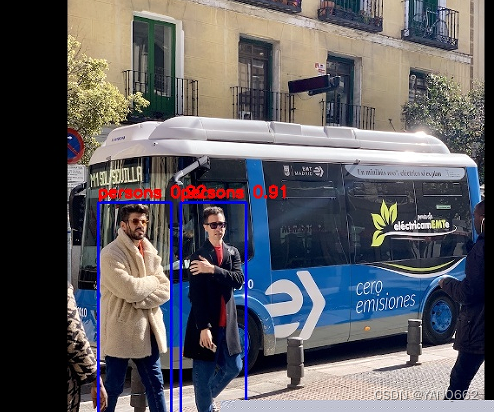
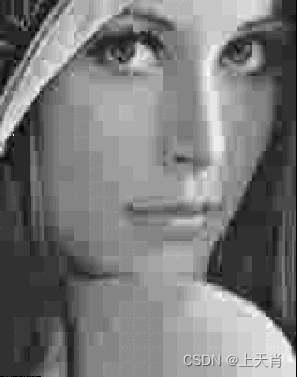

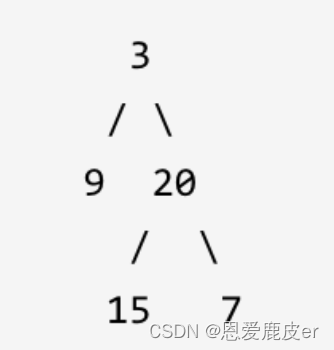
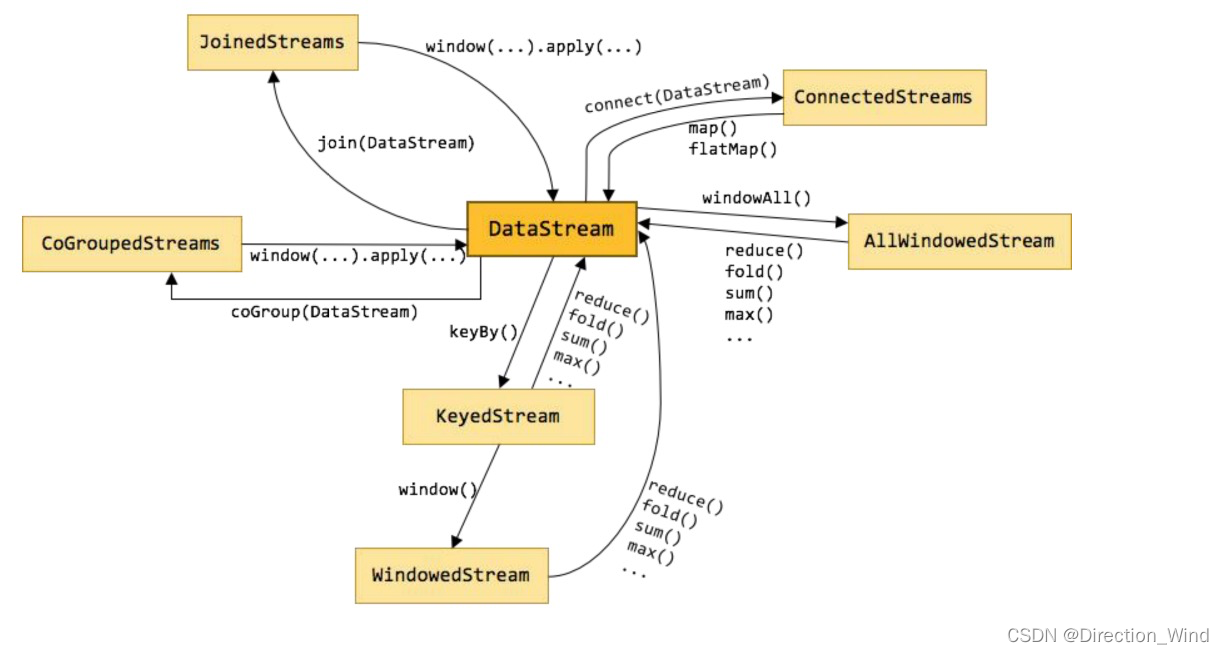
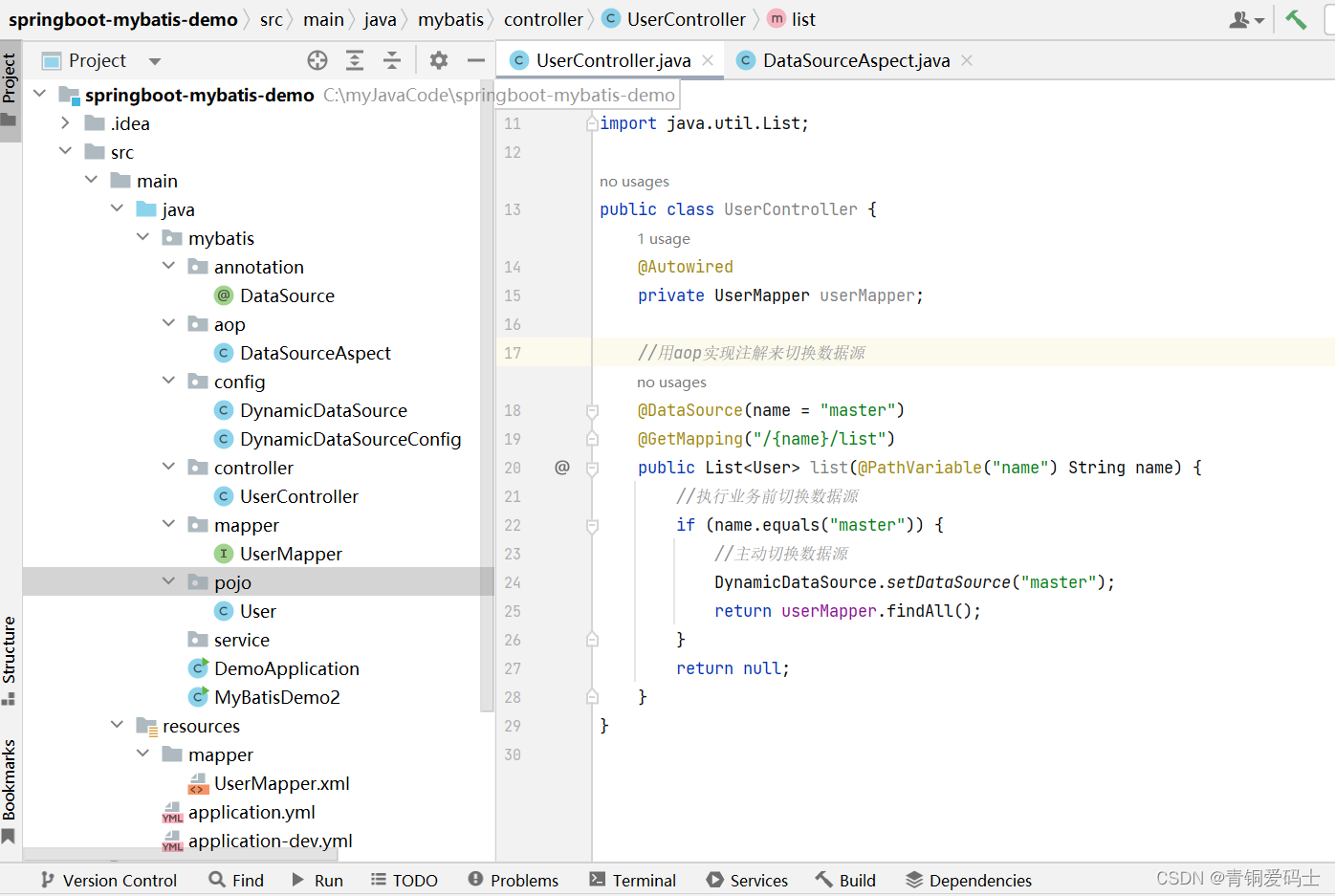
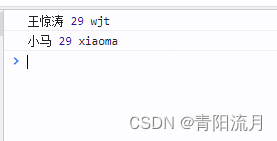

![[office] excel图表怎么发挥IF函数的威力 #微信#媒体](https://img-blog.csdnimg.cn/img_convert/fdcb58c6faa0c151dc377882a37eb25f.png)
